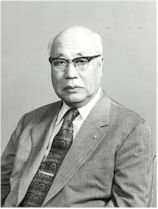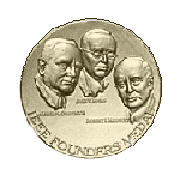Hanzo Omi
Born: 5 April 1901
Died: 30 January 1985
Early Life and Education
Hanzo Omi, Counsellor to Fujitsu Limited, was born 5 April 1901 in Ibaragi Pref., Japan. He was educated at the Tokyo Institute of Technology where he received a BS degree in electrical engineering in 1923.
Railroad Signal Work
His professional career began with the Electrical Power Engineering Division of the South Manchurian Railway Company in 1923. He then began research work in the newly formed Railway Technical Institute of the company in 1925 where his special interest and extensive field surveys in signaling technology resulted in significant contributions to the stabilization of railroad signals with the use of alternating current track circuits. During this period he also contributed to the construction of stable electrical networks over high voltage power transmission lines using coupling filters; the first successful application of carrier current practices to power transmission. It is worth noting that his innovations were later widely adapted and used in communication systems for railway and power companies in Japan.
Japan's Nascent Computer Industry
In 1936, Dr. Omi joined Fuji Tsushinki Manufacturing Co. Ltd. (which later became Fujitsu Limited), one year after it was established in Kawasaki, Japan. There he engaged in research, design and manufacture of multiplex carrier transmission equipment using non-loaded cables. Shortly after World War II, Dr. Omi came across an essay written by Dr. Kelly, then head of Bell Laboratories, who suggested that the true relationship between electronic exchange equipment and electronic computer systems may not be as "brothers" but rather as "cousins". Deeply impressed by this essay, he started to organize a small team of researchers to develop basic computer technology together with his co-worker, the late Dr. Toshio Ikeda, over-ruling the objections of management. His efforts, as later became apparent, played a leading role in Fujitsu's attempt to initiate a computer industry in Japan.
In 1952, when he visited the U.S., he had an opportunity to see the first generation of computers installed in Bell Laboratories and other locations. This encouraged Fujitsu to use relays in completing the manufacture of the FACOM 128, the very first computer installed in Japan. Later Dr. Omi guided his group toward developing a different computer system based on Parametron technology, which was invented by Dr. Eiichi Goto, now a Professor at the University of Tokyo. His tireless efforts in developing computer technology brought him into contact with the then newly developed transistors, and a new series of computers called the FACOM 230 series (an early commercial version of computers based upon transistor technology) was born.
Awards and Recognition
Dr. Omi was a member of the Board of Directors at Fujitsu between 1945 and 1971, President of Kobe Industries Corporation between 1964 and 1968, and President of Fujitsu Laboratories since its foundation in 1968 until 1975, when he became Counsellor to Fujitsu and Fujitsu Laboratories. Demonstrating a lifelong commitment to challenge he earned his Ph.D. degree in 1973, at age 71, for a dissertation titled "Research on Scale Limitations in Computers."
He was elected Director of Region 9, IEEE, in 1965, and became a Fellow of IEEE in 1966. Dr. Omi's distinguished contributions in the development of both communication equipment and computer systems were justly rewarded when he was elected Chairman of the Institute of Electrical Communication Engineers of Japan in 1962 and Chairman of the Information Processing Society of Japan in 1973. Dr. Omi was awarded the 1979 IEEE Founders Medal "For pioneering leadership on computer technology, the promotion of international cooperation in research and development in electronics and communications, and for devoted service to the electrical profession."
He died on 30 January 1985, at the age of 83.

